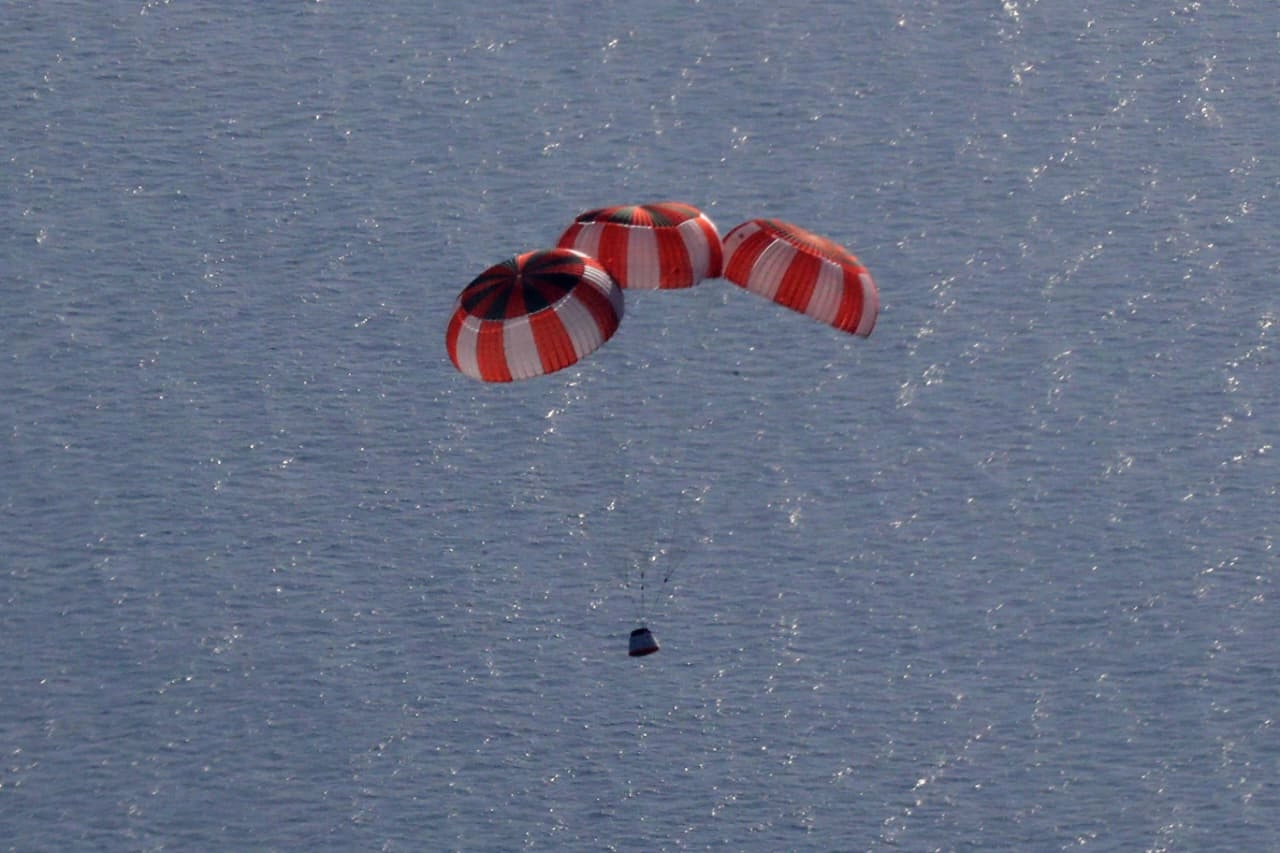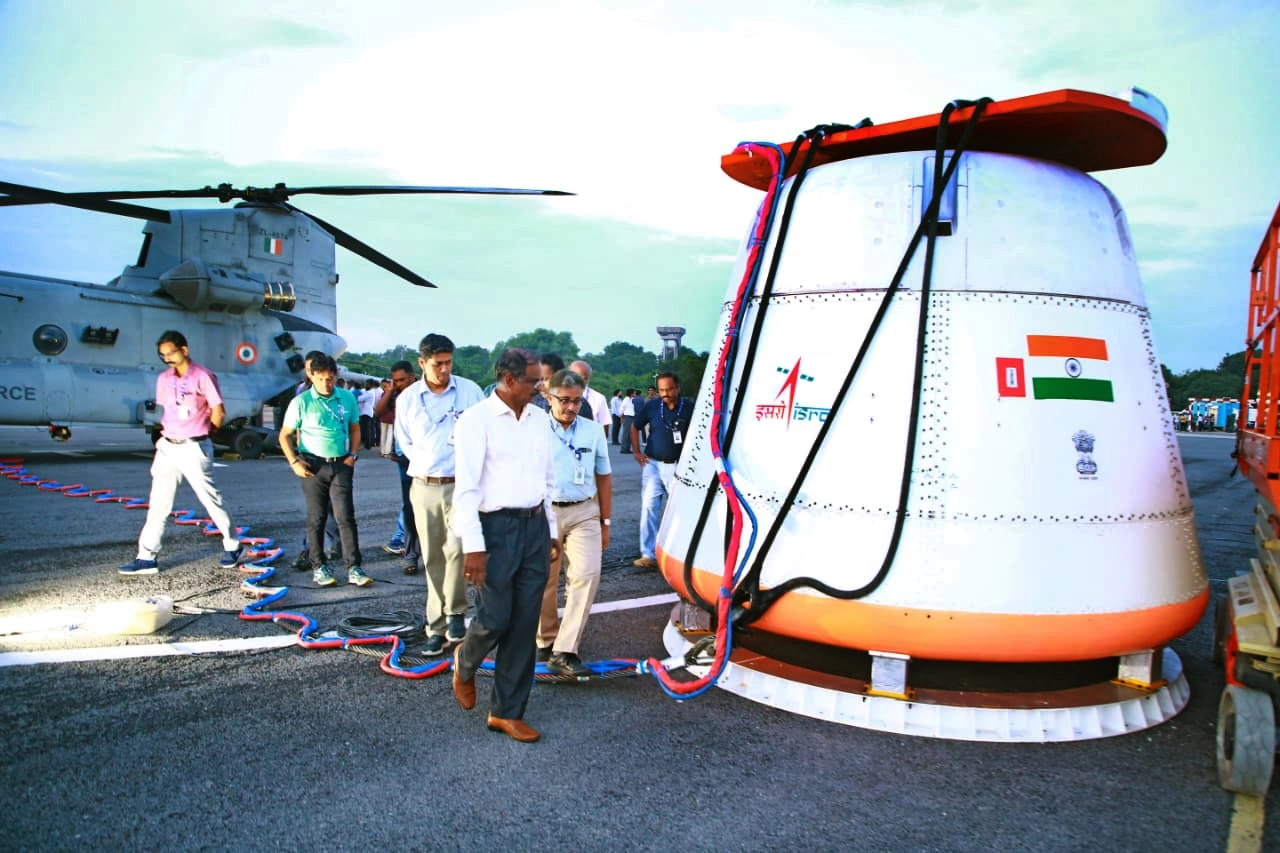
ISRO tests parachute based deceleration system for Gaganyaan missions
The Indian Space Research Organisation (ISRO) successfully completed first Integrated Air Drop Test (IADT-01) for end to end demonstration of parachute based deceleration system for Gaganyaan missions

New Delhi: The Indian Space Research Organisation (ISRO) Sunday successfully completed first Integrated Air Drop Test (IADT-01) for end to end demonstration of parachute based deceleration system for Gaganyaan missions.
"This test is a joint effort of ISRO, Indian Air Force, DRDO, Indian Navy and Indian Coast Guard", the Indian space agency said.
The Gaganyaan mission marks India’s first venture into testing human expeditions to low Earth orbit.
ISRO will launch its first uncrewed Gaganyaan mission, G1, in December 2025. Vyommitra, a half-humanoid robot, will be on board to monitor spacecraft systems, mimic human reactions to microgravity, and give ISRO engineers vital information to improve operational effectiveness and safety.
The G1 unmanned mission will be followed by the Gaganyaan crewed mission to be launched, tentatively, in 2027.
"India’s first human Space mission Gaganyaan programme has entered its final phase, with the first human spaceflight now scheduled for the first quarter of 2027", the Department of Space said.
Integrated Air Drop Test
ISRO tested its first Integrated Air Drop Test (IADT-01) for end to end demonstration of parachute based deceleration system ahead of the Gaganyaan mission launch.
The parachute system is crucial for controlled recovery of the crew module after atmospheric re-entry.
During the test, a dummy crew capsule weighing around 5 tonnes was lifted up through the air before being dropped by a Chinook helicopter. As it descended through a few km, its main parachutes had to open in a specific sequence to decelerate the capsule to a safe splashdown speed.

In the integrated air drop test, one after another, ten different parachutes of various diameters opened sequentially to gently bring the crew module safely into the landing zone, an officer from Aerial Delivery Research and Development Establishment (ADRDE), Agra, said.
ISRO Chairman Dr V Narayanan said that the parachute test was a critical step for the country's Gaganyaan missions.
The Gaganyaan project envisages demonstration of human spaceflight capability by launching crew of 3 members to an orbit of 400 km for a 3 days mission and bring them back safely to earth, by landing in Indian sea waters, according to ISRO.
Follow ummid.com WhatsApp Channel for all the latest updates.
Select Language to Translate in Urdu, Hindi, Marathi or Arabic







